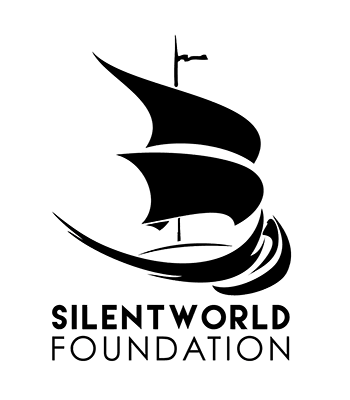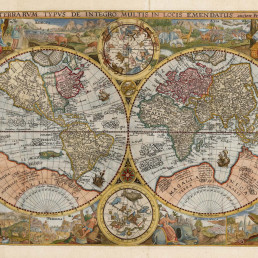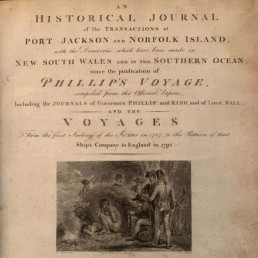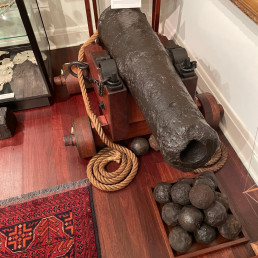
Name/TitleEast Indiaman MELLISH entering Sydney Harbour
About this objectThe East Indiaman MELLISH made a voyage transporting convicts and thirty soldiers of the 63rd regiment to Sydney in 1829. One hundred and seventy prisoners were originally embarked on MELLISH in October 1828 but a thirteen-year-old boy, Ralph Richardson, was returned to hospital suffering from dysentery, and a serial escaper, James Hawkins, had absconded before departure.
In 1821 Hawkings had been transported to Sydney for life but he escaped in 1824 and arrived back in England the following year. He was caught, sent back to New South Wales but escaped and was recaptured a further two times. On board MELLISH, Hawkins slipped his irons and lowering himself from a porthole, cut away the hawser of a small boat and rowed ashore. It was later reported that Hawkins had drowned and that the master of MELLISH had forfeited a thousand pounds for not securing his prisoners adequately.
William John Huggins (1781-1845) served in the East India Company as a steward and assistant purser on board PERSEVERANCE, which sailed for Bombay and China in December 1812, returning in August 1814. He had established himself as a marine painter when he first exhibited at the Royal Academy in 1817. He carried out numerous ship portrait commissions for the East India Company from his Leadenhall Street studio, which was close to East India House.
MELLISH sailed from Falmouth on 2nd January 1829. On 10th she anchored at Teneriffe, and on 31st January 1829 she crossed the equator. Clearly William Huggins was not present in Sydney for the arrival of the MELLISH in 1829. He probably sketched the ship in the Thames after her return from Sydney, and based his view of Sydney Harbour on other contemporary depictions. The print is undated and does not designate Huggins as Marine Painter to the King, which he became in 1834.
As his works after this date generally bear this title, this would suggest that the aquatint was published before 1834. He was Marine Painter to both George IV and to William IV and was prolific and popular, largely through prints made by his assistant Edward Duncan, his son-in-law from 1834.
MakerWilliam John Huggins - Artist
Maker RoleArtist
Date Madec1830
Period19th century
Medium and MaterialsAquatint
Place MadeSydney, Australia
Place MadeLondon, United Kingdom
Object TypeMaritime Paintings
Object numberSF001757
Copyright Licence![]() Attribution - Non-commercial - No Derivatives (cc)
Attribution - Non-commercial - No Derivatives (cc)
Explore by category
Maps and Charts
Date range: 1541-1836
Ship Models
Date range: 1629-1890
Maritime Paintings
Date range: 1793-1849
Manuscripts and Ephemera
Date range: 1768-c1850
Medallions & Convict Tokens
Date range: 1619-1880
Landscapes
Date range: 1768-c1850
Books
Date range: 1694-c1850
Currency and Shares
Date range: 1624-1823
Printed Material
Date range: 1541-1836
Maritime Archaeology
Date range: 1629-1854
Curator's corner
New acquisitions, staff favourites and curios
The mug is decorated with an underglaze and a blue transfer print. On the body, it is titled ‘Emigrants to Australia’. This type of body and glaze was discontinued by 1840. Comparison of the handle shape and the profile of the foot, point to the attribution of manufacture by the Davenport Factory.
Delta was a ship-rigged vessel with two decks and three masts. It was built in Dordrecht, Netherlands in 1839 at the shipyard of Jan Schouten and registered in the same port. Its hull was constructed of oak and sheathed in ‘yellow metal’. Delta was owned by H. van der Sande at the time of its loss and was engaged as a cargo trader.
The Delta carried 29 crew and passengers, while sailing from Melbourne to Batavia in ballast when wrecked at Kenn Reefs on 30 May 1854 whilst under the command of Captain J.G. Kunst. This vessel loss supports the pattern of shipwrecks located on a well-travelled shipping route that was poorly charted until the mid-nineteenth century. The crew of the Delta could see four other shipwrecks at Kenn Reefs at the time of their vessel’s loss.
Important image of a ship associated with Matthew Flinders, that would shortly become one of the most famous early shipwrecks in eastern Australian waters. This is a fine ship’s portrait, by one of the great exponents of the art


















